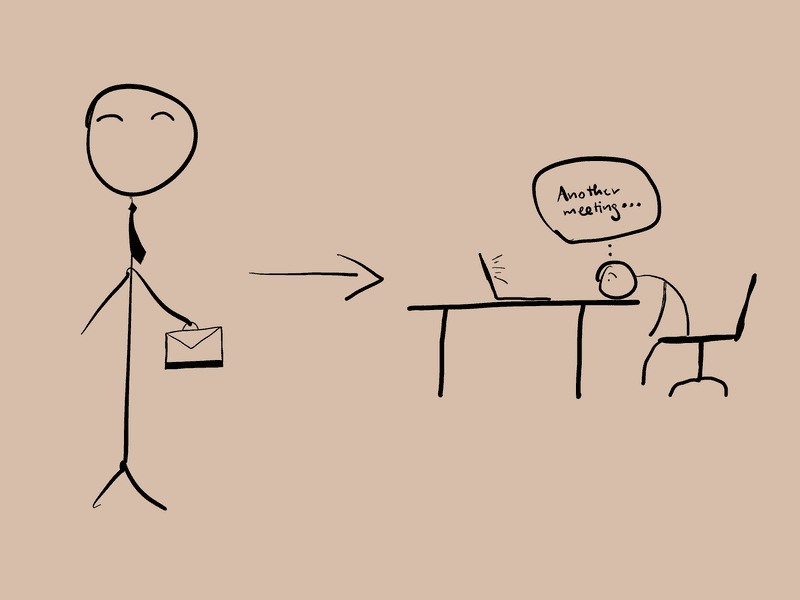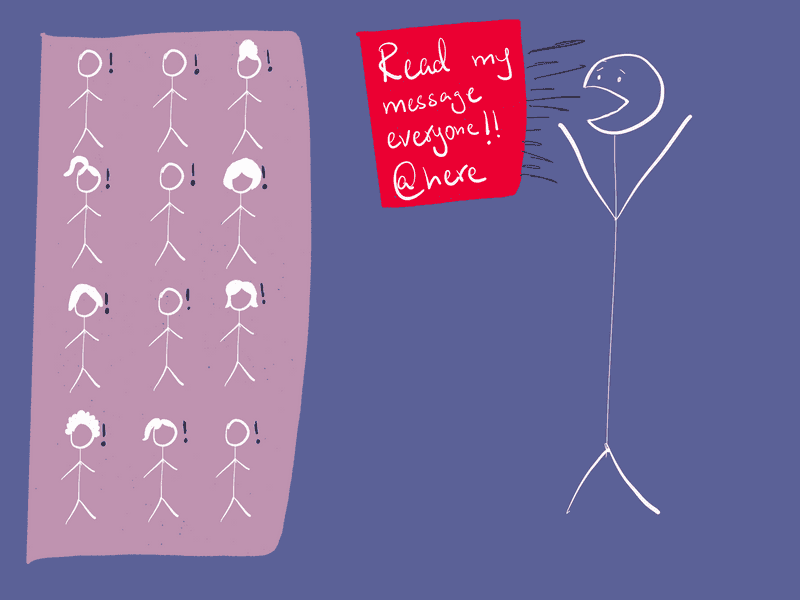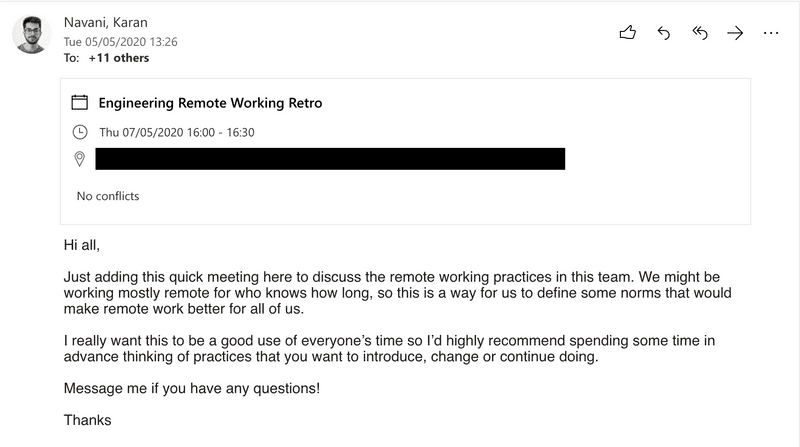Making Remote Work Better for Us
October 16, 2020
The pandemic looks like it’s not going anywhere any time soon, and with that, many of us are going to continue working from home for the near future.
I have been reflecting upon the past 8 months (yep, March was yesterday) of remote working in my team and I wanted to share few of the approaches that have made us more effective in working away from the office.
As a software engineer, I am fortunate to work in a team that is technologically well equipped. However, the success of remote working needs a lot more than the right set of tools. A shared culture and a renewed approach to collaboration and communication are equally important.
The online office
In the beginning, I felt that the switch from office to remote was abrupt and we didn’t have a chance to consciously adapt our behaviours to this new way of working. This is completely understandable, we are amid a pandemic, after all. But, as a result of this, we defaulted to mirroring our in-office habits...online.
One to one chats with colleagues became non-stop direct messages on Slack throughout the day.
Asking opinions from multiple people became either a quick Zoom call with a group of people or worse, an ‘@here’ message on a common Slack channel, which disrupted everybody's flow.
There were no longer any natural signals like we had in the real world. You cannot see a colleague wearing headphones, or see that people are out for lunch. You just expect availability and responsiveness. This can, at times, create implicit pressure for people to be more 'wired' than usual.
This isn’t a new phenomenon either, Susan Halford documented this in her research, dating back to 2005!
At home, there was a strong drive to demonstrate optimum productivity: to prove both to managers and themselves that working from home was efficient and that they were reliable and trustworthy individuals.
Research on those who work solely at home shows difficulties in ending the working day, as time becomes task-based, rather than clock-based (Steward, 2000), and the lack of home-work boundaries makes it difficult to ‘switch- off’.
In search of a better way
I’d heard great things about Basecamp’s book - Remote, so I decided to give it a read. It proved to be a good idea as it taught me to think about remote-working as a distinct platform, with its unique opportunities.
Think of how advertising on the internet has evolved from trying to replicate print or tv advertising on the internet, to more internet-native ads such as sponsored content, influencers and more.
In-office and remote work are different platforms of work. And right now, what we’re seeing a lot of companies attempt to port local work methods to working remotely. Normally have four meetings a day in person? Then let’s have those same four meetings, with those same participants, over Zoom instead. It’s a way, but it’s the wrong way.
Source: Remote work is a platform
Becoming remote-first
Inspired by this book, I decided to involve my team in figuring out how we can implement some remote-first practices in our ways of working.
Getting on the same page
I sent out an invite to my team for a 30-min discussion to reflect on our remote working practices and to be intentional about the norms we have in place around it. For those of you familiar with Scrum, we hosted a remote working ‘retrospective’.
The meeting proved to be super insightful and ran for twice the allocated time as people felt it was valuable for us to continue a deeper discussion into the items we brought to the table.
We filled up three columns on the retrospective board and started to collate popular themes.
We discovered some key pain points such as:
- Inadequate written knowledge and documentation was leading people to constantly message one another
- The lack of clear Slack etiquette meant that people used it in ways that were disruptive to the flow of others (using @here to notify everyone of every single message, starting impromptu calls, etc)
- Meeting fatigue was ramping up as in-person meetings were being substituted for back to back zoom meetings, with minimal scope for physical movement
The critical thing here to remember is that this is blame-free. If you are going to try this, please refrain from attributing blame to anyone. The intention of this exercise is to build a shared understanding and process. Getting personal will only be counterproductive.
Moving forward
Once we uncovered our key pain points, it was time to move forward. The team suggested some ideas and initiatives that we would experiment with.
Some of these are:
-
More asynchronous/offline working – Avoid real-time meetings and communication in favour of approaches where people can act on things in their own time. (Eg: Adding thoughts to a shared document whenever you have free time in your schedule, instead of a scheduled meeting to discuss it)
-
No meeting days – A day each week where no meetings are scheduled to allow for deep and focused work.
-
Do not disturb indicator – Having a 🎧 or 🚫 emoji on Slack for when we are working on something complex that requires concentration
All of these have been successful approaches in reducing our digital noise and helping us carry on working in a productive flow. Bear in mind that this is an iterative process and you should regularly review what’s working and what isn’t, and make changes accordingly.
A unique opportunity
If there’s one thing you should take away from this piece, it’s the fact that remote working is a platform with its own quirks. Trying to port over in-office behaviours to the online medium is doing a disservice to the opportunity at hand.
If we do this right, we can make a meaningful improvement to how well work works for us (trying saying that quickly).
If you have any questions or thoughts about this, feel free to reach out to me.
Karan
If you liked this post, might I recommend -



